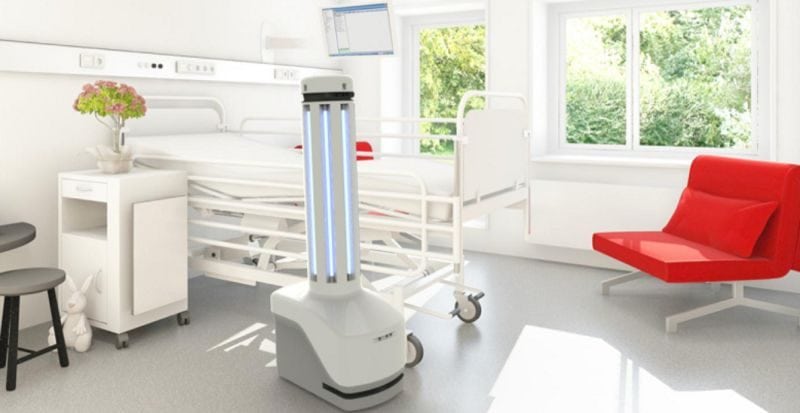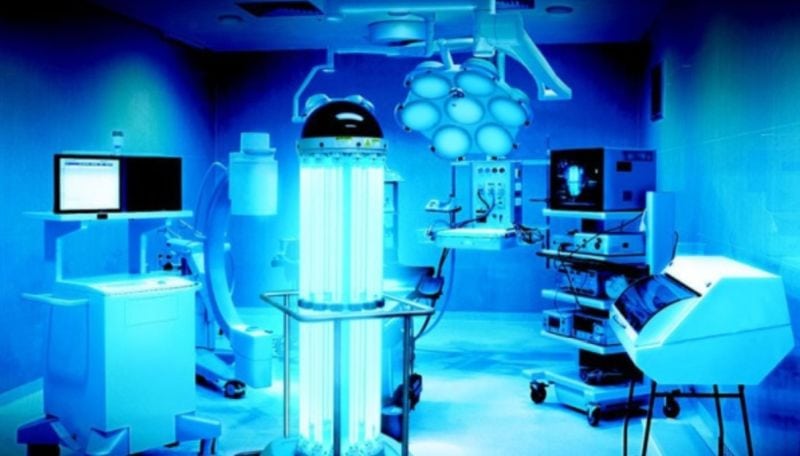Since the last couple of decades, experts have developed many game-changing scientific breakthroughs. The spit test for speedy detection of cancer to disinfection UV robots for complete hospital safety is one of them. These advancements have definitely blurred the fine line between biotechnology and its therapeutic applications.
Overview
 Image Source : meditek.ca
Image Source : meditek.ca
As a matter of fact, currently, the world is facing numerous biological issues. Some of them, like the spread of infections through hospital environment and increased antibiotic resistance, need immediate attention in order to reduce socioeconomic burden. According to the World Health Organization, these nosocomial infections account for closed to 7% deaths in developed countries like the US and 10 % in developing countries. Out of many bacteria responsible for hospital induced mortality, nontuberculous bacteria and Aspergillus infections are primarily found in patients with the compromised immune system. Their existence is increasingly reported in many iatrogenic bloodstream infections, catheter-related infections, skin or tissue related infections.
Experts and medical professionals have acknowledged the fact that these hospital-acquired infections (HAI) and infections at the site of surgery can have devastating impacts on the therapeutic outcome and cost. In spite of the implementation of several interventions like HEPA filters, education, training and more stringent cleaning procedures, these superbugs stay on the surface from hours to months. Thus, it is very necessary to incorporate more effective and automated disinfection system for optimum room sterilization.
In this regard, the UV disinfection robot has been identified as one of the novel technologies that can serve as the best alternative to conventional disinfection procedures.
In order to analyze how effective these disinfection UV robots are; the system is incorporated in more than hundred healthcare facilities around the globe. The analysis has further confirmed the effective reduction of the rate of infection by more than 70 %, through the incorporation of disinfection UV robots in the hospital.
How does UV disinfection robot work?
The innovative UV disinfection robot for hospitals is a portable machine shooting out UV-C light at the rate of approximately 120 flashes per minute. The device emits a lethal dose for maximum germ killing from a central location in the room. The inbuilt sensors of this automated version can calculate the time required as per the room variables, like room size, amount and location of the equipment placed in the rooms as well as their surface reflectivity. These disinfection robots can pass UV rays through the outer wall of the superbugs, damaging their own molecular mechanism. This makes them impossible to adapt, mutate or reproduce; and further stop their propagation.
Additionally, the UV disinfection robots have integrated motion detection system, which can sense human entry into the room and can halt its operation in between to further prevent accidental exposure to humans.
What type of bacteria can be controlled?
 Image Source : ctvnews.ca
Image Source : ctvnews.ca
The cutting-edge technology is applicable to a wide spectrum of microorganisms like bacteria, viruses, fungi, bacterial spores, etc. The technology does not support the incorporation of any harmful chemicals or fumes. Studies in this regard, have confirmed that these mobile UV disinfection robots can be effective against even the most dangerous pathogens, such as:
- Clostridium difficile (that is especially hard to eliminate from the surface and can be on for four to six months)
- Norovirus
- Influenza
- Ebola
- Staphylococcus aureus
Nanovirus outbreaks at the sea
Apart from the application of UV disinfection robots in the healthcare system, it can also be the ideal disinfection system to be used in other areas, such as cruise ships. According to the recent declaration of Centre of Disease Control (CDC), cruise lines can be the breeding grounds for many nano-virus to thrive and multiply at a faster rate. The data suggests that more than 90% of the diarrhea-related outbreaks happen on the cruise ships and can be controlled by following proper sanitation programme and use of UV robots for nano-virus outbreaks at the sea.
The portable machine can be easily carried and maintained on the cruise ships to control further spread of infection.
Key benefits of the application
 Image Source : healthcaredenmark.dk
Image Source : healthcaredenmark.dk
The UV disinfection robots are admired by various hospitals and places that demand highly automated system to support a healthier environment and better public safety. These UV disinfection robots are:
- Smarter to identify shadowed areas of the room that are generally ignored through conventional ways; and hence can confidently disinfect areas with 99.99% accuracy.
- Powerful to shoot highly lethal germ killing dose at a time to destroy stubborn clinical pathogens from direct, indirect and shadowed surfaces of the hospital areas.
- With inbuilt software for real-time reporting and tracking to adhere to the strict regulatory compliance and present the documentary proof for the same.
Advantages of UV disinfection robots
Some of the advantages reported by UV disinfection robots are:
- Shorter turnaround time required as compared to conventional disinfectants, such as bleach.
- The higher rate of pathogen destruction, leading to a better reduction of hospital-acquired
- Smarter technology that can identify hidden or ignored places; thus, cleaning surface even at distant proximity.
- Confirmed reduction in a microbial spread in the environment by up to 90%.
- Highly secured documentation for safety and compliance.
The latest findings on UV disinfection robots for hospitals
By the year 2016-17, these robots were placed at the top of the list highlighting advanced and innovative technologies. Below are some studies that have demonstrated their efficacy and feasibility.
- A study published in the Journal of Infection Control and Hospital epidemiology confirmed that UV disinfectant robot can kill the bacterial and fungal pathogen, within 10 minutes of its exposure with 99% accuracy.
- Luke’s Healthcare facility at Utica confirmed that they were able to minimize microbial infection by up to 40% after implementation of the UV disinfection robotic system.
- According to the study published in American Journal of Infection control, the UV disinfection robot can be safely used on personal protective equipment to reduce the risk of infection.
Thus, the UV disinfection robots act as complete portfolios that share the same intelligence as that of the human beings to kill pathogenic superbugs effectively.


